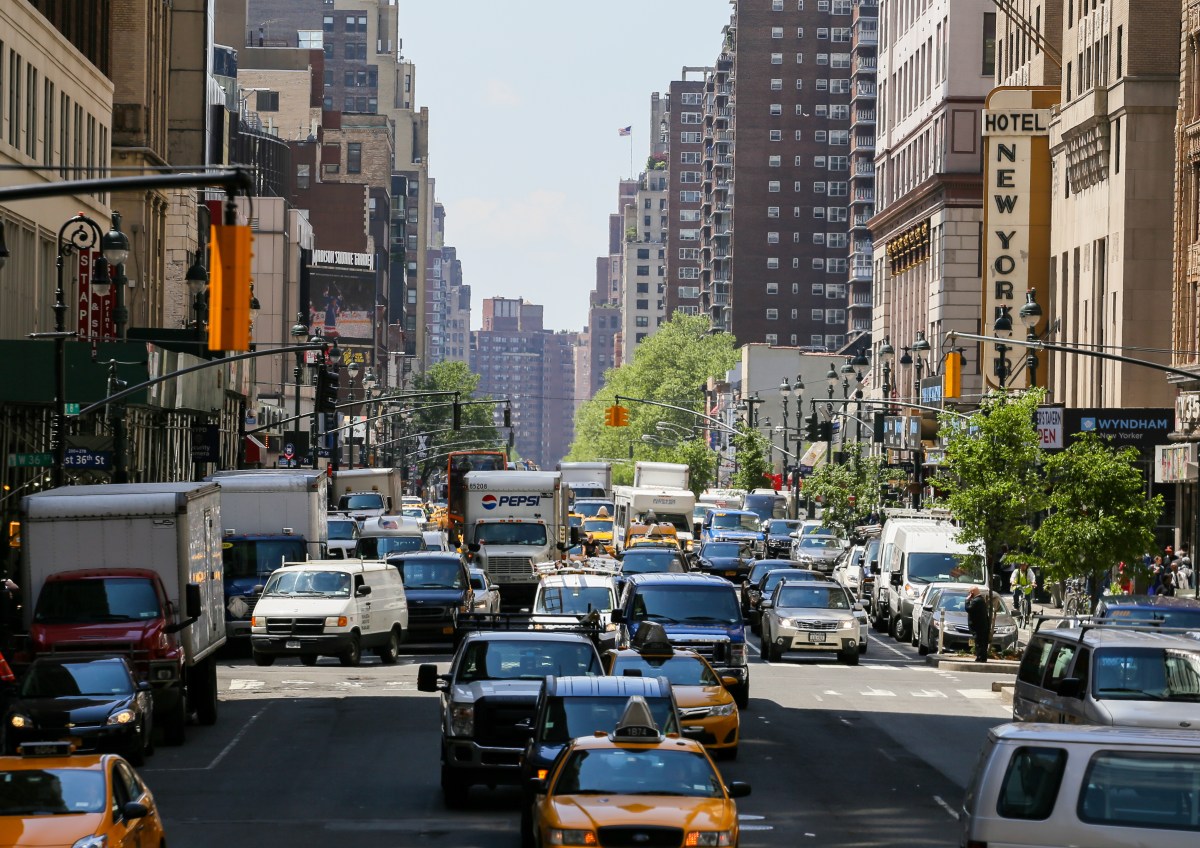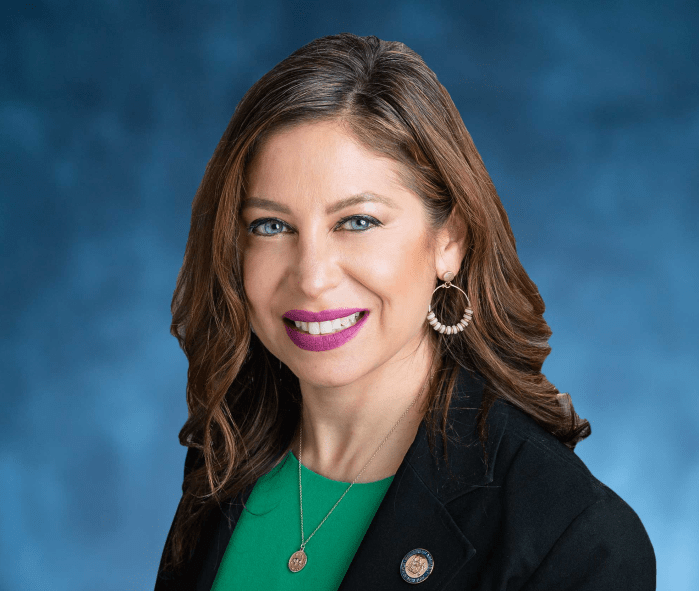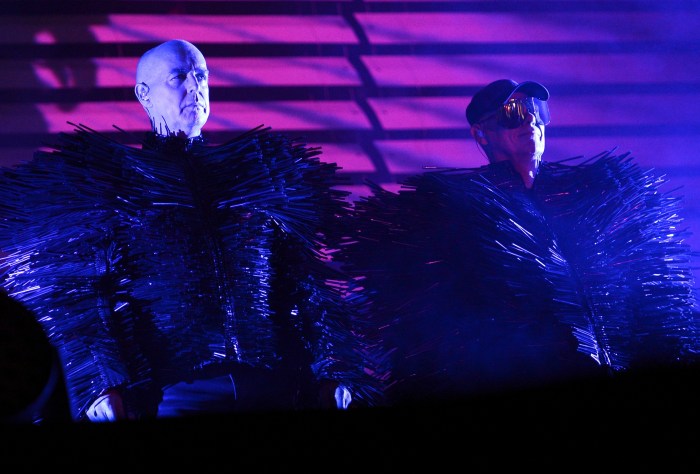Story & Photos by TAMARA HARTMAN
Pushing all of his enthusiasm and learning ahead of him, a second grade student in Briarwood kneeled on his chair last week, one hand on his desk and the other waving in the air to answer a question about geometric forms, psychology, patterns and artistry.
But he thought he was just talking about a leaf.
This exciting new trick of learning — in its second year of use in Queens — is actually basic, and ancient, and revived from a death by budget cuts. It is called "The Arts" and artists have been staging a quiet revolution around the borough thanks to The Center for Arts Education.
The Center was established with a $12 million challenge grant from the Annenberg Foundation designed to create a commitment to The Arts in New York City schools. In April of 1997, it awarded multi-year funding to 37 New York school and their partner arts groups. In February 1998, a second cycle funded 24 arts programs.
In total, 16 Queens schools have now been changed by reaching out to the cultural resources of their borough, transforming the way they teach children.
Briarwood’s P.S. 117 teaches through the inconvenience of expansion construction because it was built for 650 students but teaches almost 1,300 students who speak 54 different native languages.
Last Wednesday, class 2-119 — Mrs. Hanne Weinstein’s class — had their second lesson of the week with Karen Fitzgerald, visual artist affiliated with the Jamaica Center for Arts and Learning (just a short drive away in Jamaica). She asked them what kind of drawing they had learned at their Monday lesson. A flurry of hands waved and the response was "contour drawing" with it’s "law" that you can only look at the leaf as you draw, not at the paper.
Artist Aimee Mower (left) looks over a photo book of past projects with Student Artists Travis Swiatocha and Emily Brennan, and Teacher Lois Olshan. Leaves were distributed, special ones for each student, and the second graders stared intently while their hands traced geometric shapes that their minds had captured.
Mrs. Weinstein was there with Their Artist, Ms. Karen, offering constant encouragement of their efforts and explanation of the assignment.
Then Their Artist asked them what lived in their leaves, and worked with students to draw creatures from her leaf-contour drawing on the board. With the creativeness of a Rorschach test and the ease of staring at clouds, the students used their minds.
And then Ms. Karen threw in a twist. She told the students to take their contour drawings and turn them into the habitats of an animal that they would draw next. As caves and forests were created from the tentative, twisting pencil lines, the second graders gained a better understanding of habitats and what kind of creature would want what kind of home.
It was teaching through a universal language and cutting out the middle-man of ESL. "Once in a while there is a new child who doesn’t speak English well," Karen Fitzgerald noted about her teaching time in the multi-ethnic school, "but we’ll pair them with another child and in a few days he is producing work right along with the other kids."
"There is something special about spending time with children who are not your own . . . it’s a special relationship," Fitzgerald explained, "and there is this ‘outside component.’ The students really know you care if you are an outsider and you come and spend time with them."
And that is what The Center for Arts Education is all about. When the five-year Annenberg Challenge runs out, there will still be a Center, according to Executive Director Hollis Headrick and its Chairman Laurie Tisch Sussman. It will become a warehouse of information for school wanting to set up partnerships with cultural organization in their neighborhoods and provide assistance to currently funded schools as they search for ways to keep up their funding levels.
Headrick explained that in order to receive a grant, the schools had to come to the Center with a partnership proposal that reintroduced the Arts to the Core Curriculum, changed the school through the Arts, offered professional development for the teachers and had a built in system for evaluation and assessment.
Their idea had to be to create a "school without walls" where the cultural institutions were invited into the school and the students were taken out of the school view the institutions and their work.
But the Center’s New York City Partnerships For Arts And Education (NYCPAE) program didn’t stop there. Partnership have to not only benefit the students, they also have to benefit the teachers. Visiting artist, whether they be painters, dancers, musicians or something else, have sessions with the teachers before they do the students.
"Each artist tells the kids from the first time that ‘what is really happening here is I’m teaching your teacher’ and as they sit down next to their regular teacher, that person is ‘morphed’ into a student."
P.S. 144 in Forest Hills is partnered with the cultural institutions of Flushing Meadows-Corona Park and the Queens Botanical Gardens. So when the lesson planned called for the students to go foraging for food in the Gardens, Teacher Lois Olshan explained, the teachers had their own day in the "woods." "The teachers were very excited," explained Olshan, who coordinates gifted class programs and whose principal credited as the reason the Center was involved at P.S. 144. "They got on a high . . . something just clicked," and learning went on at the teacher level. "The hands-on experience with the artist freed the teachers. They lost their inhibitions when it comes to Art."
Long Island City High School Assistant Principal George York (left) with Student Artists (left to right) Daisy Antonescu, Teresa Gomes, Rudi Beqri, and Sadia Absar.
"Art is completely integrated into what the children do," Olshan said, "we make it meaningful. The fourth grade studies Native Americans and the Artist . . . specialized in making bows and arrows. Clay animals were made as part of the study of mid-eastern Indians."
Headrick explained "When we went to school, the Arts were viewed as something you learned for skill . . . the warm, fuzzy part of education. We need to think about the Arts in the same way we thing about math or science. They’re cognitive . . . communications tools demonstrating knowledge. It is a tangible difference . . . go to a school transformed through the Arts. You don’t transform a school through English or Math."
Finally, students are transformed, too.
Travis Swiztocha, 9, wants to be a baseball player or a sports writer when he gets older. But today at school in P.S. 144 he enjoyed the clay sculpture project that taught him about "Native Americans and the environment" because of the "many geometric shapes that are in [the animals]." His favorite subject is math.
Travis’ classmate, Emily Brennan, also 9, also enjoyed the sculpting class but she knew she would. She takes private lessons in sculpting every other year — because of the expense — and now that love is supported in her school work. She chose an elk for her creature, "a bigger form of a deer," and hopes to be an artist working in clay someday, but she is also excited about reading.
On the high school level, the realism was astounding.
At Long Island City High School, were a regular opera class is taught and a partnership maintained with P.S. 1 Contemporary Art Museum, art students are already attending Cooper Union during their summers off.
Rudi Berqri, 15, was surprised at the age of the young artist who worked with him at school. He always enjoyed drawing cartoon-like characters but never explored his talent before the program. Now "I take my dreams from my mind and I express it on paper," he said. He hopes to become a doctor and enjoys the equations of mathematics, but art is his second choice.
Sadia Absar, 18, has been exploring the way she feels as her life mainstreams in American culture. "In my culture, it is a crime to think you can make it in this world, especially if you are a woman" so she created a collage showing half her face with the veil that her culture requires she wears in public and half her face unveiled, the way she feels in America. "Everything you do expresses how you feel . . . who you are," she said. Sadia, who really had no interest in art before going to L.I.C. H.S., now plans to work in computer graphics.
Teresa Gomes, 18, was interested in Science when she was younger because she liked to see "the guts of stuff," but after winning an painting contest in her freshman year, she realized she had a talent and now she wants to work in computer graphics designing advertising. But her Mom’s not disappointed. "She’s happy," Teresa said "when she was little she liked to draw too" and now her mother is proud that her daughter has her talent.
As is Daisy Antonescu’s father. He was an iconographer in Rumania and he "loves it" that his daughter is in the program. She believes she "observes a lot more than a lot of people . . . drawings catch that moment." The 18-year-old spent a time separated from her father during which she sent him pictures and when they were reunited he questioned why she stopped. "He pulled out a draw and there was everything I used to do," she said.
Long Island City High School Assistant Principal George York believes this kind of parental involvement is essential, as does the Center. After-school workshops for parents are encouraged as well as parent involvement in family learning during the school day.
"Parents have a stake in the education of their children," York said, "‘culture’ is not as valued as we’d like it to be, but if more people buy into what we are doing . . . the support we get from everybody will mean that students will be more comfortable making choices in their lives," be they career choices or educational ones.
The Center will soon be putting out a request for other partnership proposals seeking funding before the Annenberg Challenge funds are gone. To find out more, contact the Center at (212) 971-3300.


































